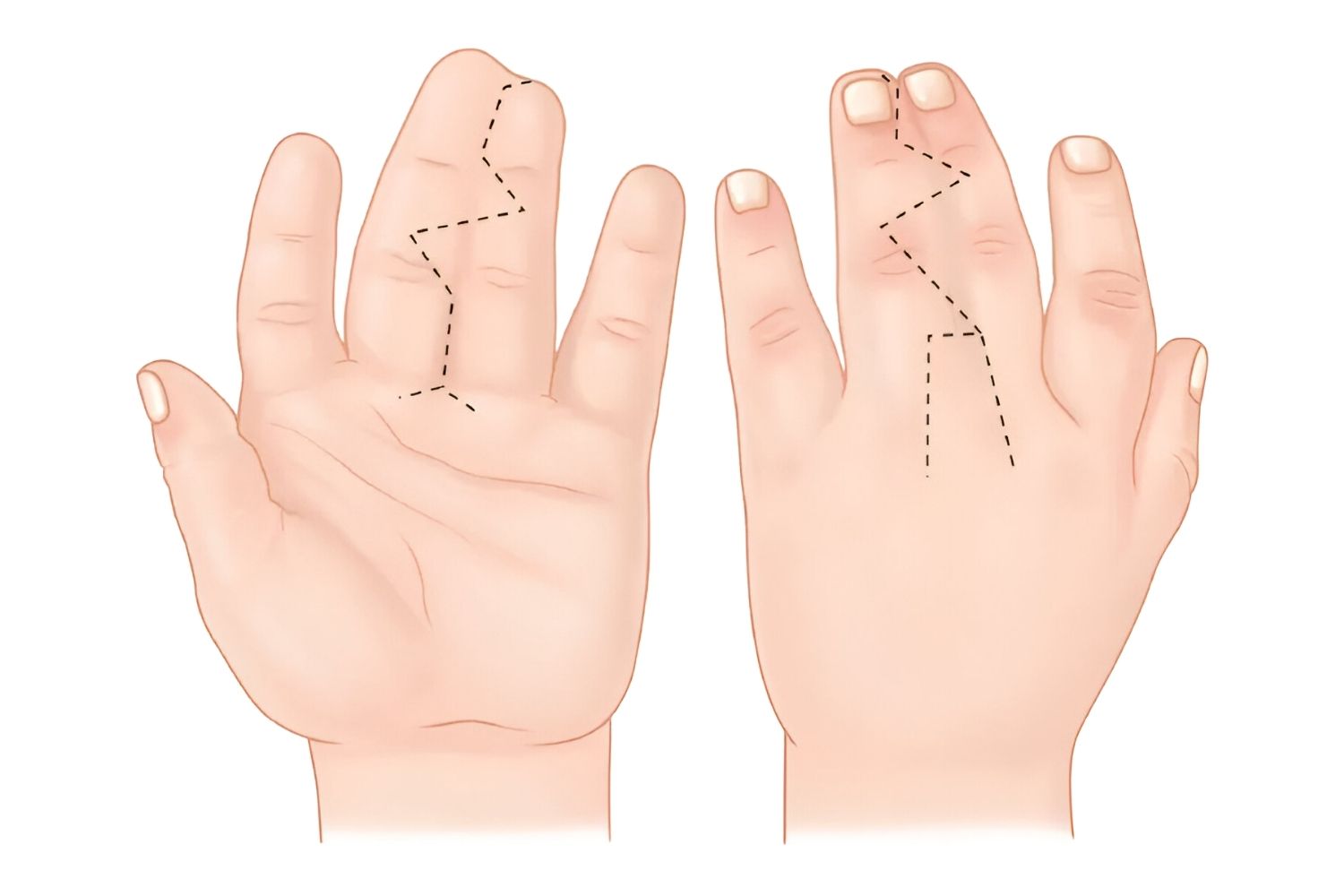
Cryptophthalmos-Syndactyly is a rare genetic disorder that affects multiple parts of the body, primarily the eyes and fingers. Cryptophthalmos means "hidden eye," where the skin covers the eyes, making them appear absent. Syndactyly refers to the fusion of fingers or toes. This condition can lead to significant challenges in vision and hand function. Fraser syndrome is another name for this disorder, named after the geneticist who first described it. Understanding this condition involves looking at its causes, symptoms, and treatments. Here are 25 facts to help you grasp the essentials of Cryptophthalmos-Syndactyly.
Key Takeaways:
- Fraser syndrome, also known as Cryptophthalmos-Syndactyly, is a rare genetic disorder affecting eyes, fingers, and overall development. Early diagnosis and tailored interventions are crucial for managing its wide-ranging physical and health implications.
- Genetic testing and a multidisciplinary approach are essential for diagnosing and managing Fraser syndrome. Surgical interventions, therapy, and ongoing monitoring play key roles in addressing the specific needs of affected individuals.
What is Cryptophthalmos-Syndactyly?
Cryptophthalmos-Syndactyly, also known as Fraser syndrome, is a rare genetic disorder. It affects multiple parts of the body, including the eyes, fingers, and toes. This condition can lead to various physical abnormalities and developmental issues.
-
Cryptophthalmos means "hidden eye." In this condition, the eyelids are fused together, covering the eyes completely or partially.
-
Syndactyly refers to the fusion of fingers or toes. Individuals with Fraser syndrome often have webbed or fused digits.
-
Fraser syndrome is named after geneticist George Fraser, who first described it in 1962.
-
This disorder is inherited in an autosomal recessive pattern. Both parents must carry a copy of the mutated gene for a child to be affected.
-
The FRAS1 gene mutation is one of the primary causes of Fraser syndrome. This gene plays a crucial role in skin and organ development.
Physical Characteristics of Fraser Syndrome
People with Fraser syndrome exhibit a range of physical characteristics. These can vary widely in severity and presentation.
-
Microphthalmia is common, where one or both eyes are abnormally small.
-
Ear abnormalities are frequent. These can include malformed or low-set ears.
-
Nasal defects such as a broad nasal bridge or underdeveloped nostrils are often observed.
-
Laryngeal and tracheal anomalies can lead to breathing difficulties and require medical intervention.
-
Renal agenesis or the absence of one or both kidneys is a significant concern in Fraser syndrome.
Developmental and Health Implications
The condition can also impact overall development and health. Early diagnosis and intervention are crucial for managing symptoms.
-
Intellectual disability may occur in some individuals, though cognitive abilities can vary.
-
Hearing loss is common due to ear malformations.
-
Respiratory issues can arise from laryngeal and tracheal anomalies, sometimes necessitating a tracheostomy.
-
Urinary tract anomalies can lead to kidney problems and require ongoing medical care.
-
Genital abnormalities are also seen, including ambiguous genitalia or underdeveloped reproductive organs.
Diagnosis and Genetic Testing
Diagnosing Fraser syndrome involves a combination of physical examination and genetic testing.
-
Prenatal ultrasound can sometimes detect physical abnormalities associated with Fraser syndrome.
-
Genetic testing can confirm the presence of FRAS1 gene mutations.
-
Family history is important. Genetic counseling can help families understand the risks and inheritance patterns.
-
Multidisciplinary approach is often needed for diagnosis and treatment, involving specialists in genetics, ophthalmology, and other fields.
Treatment and Management
Managing Fraser syndrome requires a tailored approach to address the specific needs of each individual.
-
Surgical interventions can correct some physical abnormalities, such as syndactyly or cryptophthalmos.
-
Speech therapy may be necessary for those with hearing loss or speech difficulties.
-
Occupational therapy can help individuals develop fine motor skills and adapt to physical limitations.
-
Regular monitoring by healthcare professionals is essential to manage ongoing health issues, such as kidney function and respiratory health.
-
Support groups and counseling can provide emotional support for affected individuals and their families.
-
Research and clinical trials are ongoing to better understand Fraser syndrome and develop new treatments.
Final Thoughts on Cryptophthalmos-Syndactyly
Cryptophthalmos-Syndactyly, also known as Fraser Syndrome, is a rare genetic disorder that affects multiple parts of the body. Understanding its symptoms, causes, and treatments can help those affected and their families navigate the challenges it presents. Early diagnosis and intervention are crucial for managing the condition and improving quality of life. Genetic counseling can provide valuable insights for families with a history of the disorder. While there is no cure, advancements in medical research offer hope for better treatments in the future. Awareness and education about Cryptophthalmos-Syndactyly can lead to better support systems and resources for those impacted. By staying informed and advocating for continued research, we can contribute to a brighter future for individuals with this rare condition.
Frequently Asked Questions
Was this page helpful?
Our commitment to delivering trustworthy and engaging content is at the heart of what we do. Each fact on our site is contributed by real users like you, bringing a wealth of diverse insights and information. To ensure the highest standards of accuracy and reliability, our dedicated editors meticulously review each submission. This process guarantees that the facts we share are not only fascinating but also credible. Trust in our commitment to quality and authenticity as you explore and learn with us.
